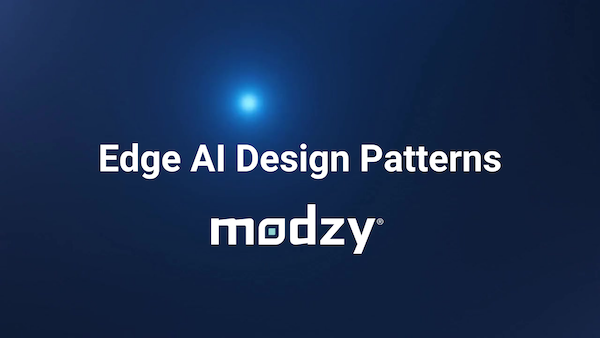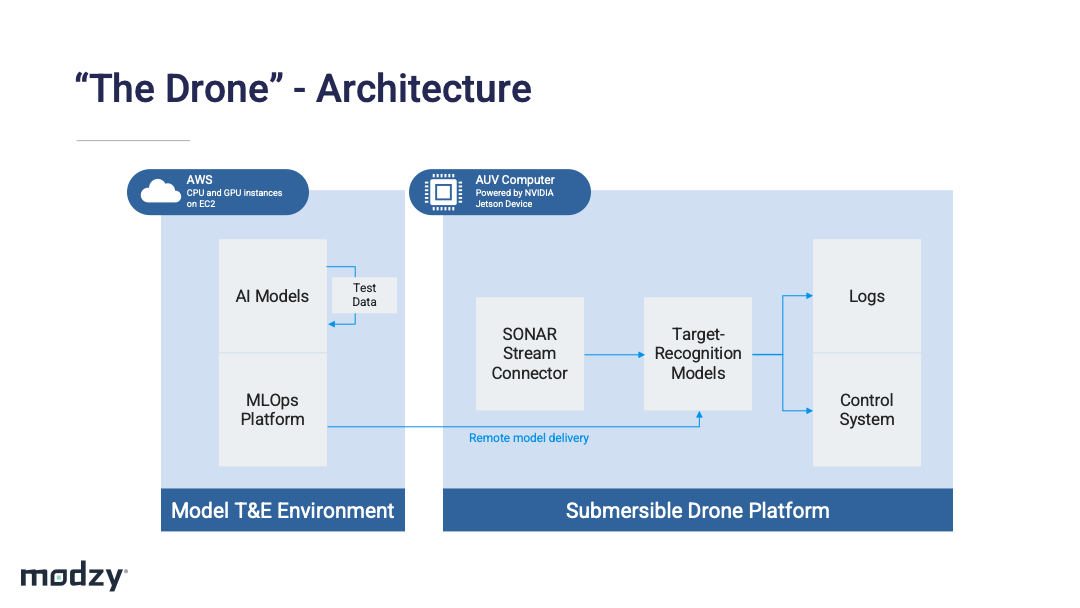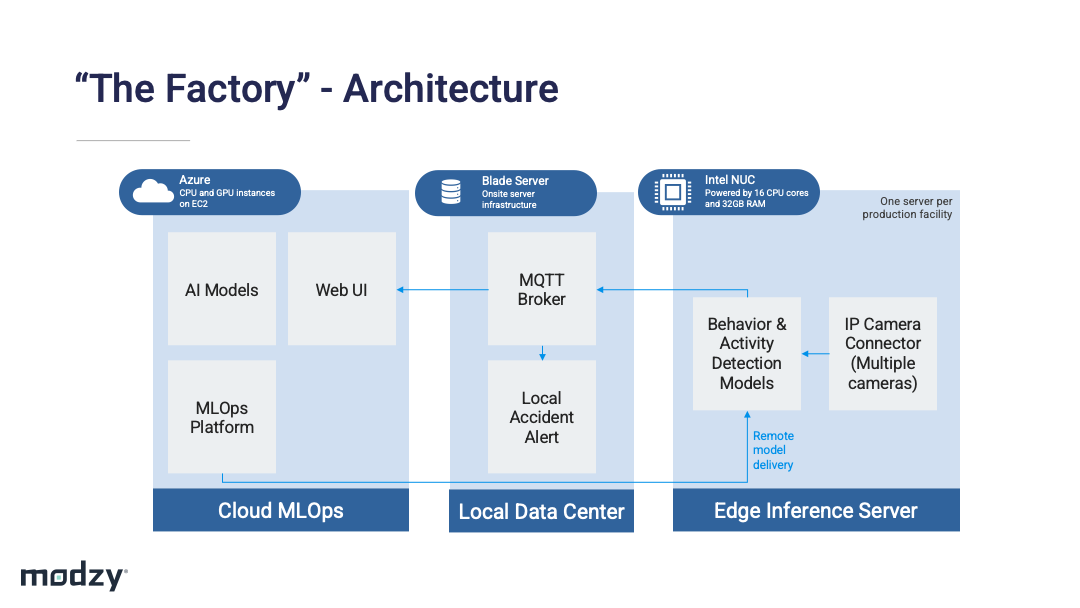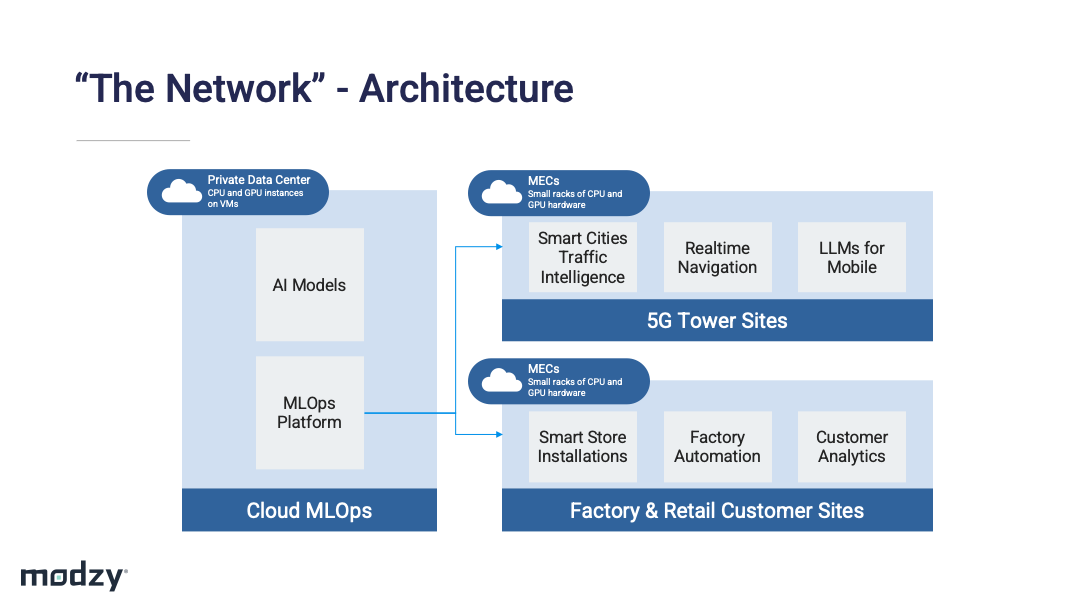Edge AI Architectures and Design Patterns
In this blog, we examine four common architectures and design patterns for building edge AI systems.
In this blog, we examine four common architectures and design patterns for building edge AI systems.

Through our work with customers across various industries and use cases, we’ve observed four common design patterns for edge AI systems. One important point to remember when considering different design patterns is that the “edge” is a heterogenous concept – it includes a spectrum of “devices,” from a 5G MEC, all the way out to microcontrollers. Although these devices possess different compute, power consumption, and network connectivity capacity and requirements, we can think of each of them as different edge locations with the ability to run ML/AI models. These patterns break down some of archetypes we’ve encountered, and take into account a variety of different computing requirements and paradigms. This blog includes an overview of each, as well as a video with examples and practical applications. Let’s dive in.
The Drone: this pattern refers to scenarios with self-contained edge applications, where all logic must run on a single device, such as drones or autonomous underwater vehicles. These circumstances usually require some creative thinking around how to make the most of limited resources.

The Factory: this pattern describes situations that leverage the cloud and edge deployments to run machine learning models directly in a facility, such as on a factory floor. This paradigm allows you to use the cloud for more compute intensive tasks, while leveraging edge compute as necessary to enable analysis at the point of data collection, reducing the need for unnecessary data transfer.

The Network Architecture: this pattern describes situations you’re processing data in multiple downstream computing environments, and that data is being fed back into a larger system.

The Cluster: although they might not come to mind as being edge environments, you can think of multiple distributed data clusters as edge locations. This pattern can often be found in industries like healthcare and finance.
Check out this video to learn more about these design patterns and real-world examples of these patterns in action.